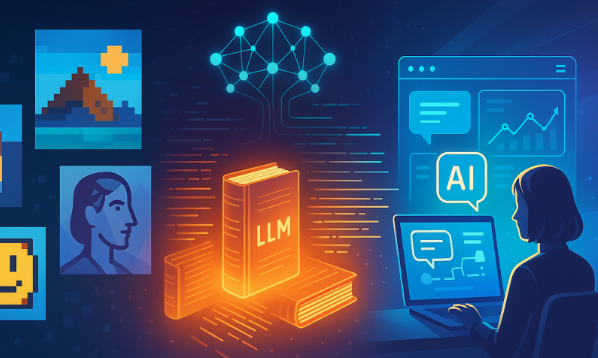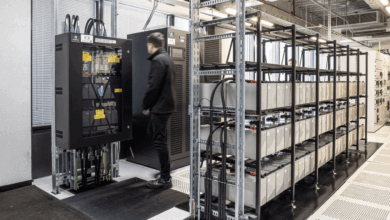
Introduction: A Decade of Acceleration
Over the last ten years or so, things have really sped up in artificial intelligence. Back then, it was mostly these experimental setups, you know, neural networks spitting out fuzzy cat images or chatbots that could barely string a sentence together. Now, though, we’ve got these powerful systems woven right into how we work every day. It’s not just about cranking up the computing power or tweaking algorithms smarter. No, it’s more like a big shift in how people handle info, get creative, and automate stuff. These days, even an AI-Powered Browser can act as a digital assistant, totally changing the online game for work and life.
Stage One: Image Generation as the First Breakthrough
Stage one hit around 2021 to 2022. That’s when diffusion models like DALL-E and Stable Diffusion really broke through. They let you type some words and boom, out come high-quality images, photorealistic ones or wild artwork, all in seconds. For the first time, regular folks could see AI doing something tangible. Designers, marketers, even hobbyists jumped in without needing any special setup.
This part mattered for a couple reasons. First off, accessibility. You didn’t need coding skills or anything. Just anyone could give it a shot. And second, it was creativity right there on demand. AI wasn’t only answering queries. It started making cultural stuff, actual artifacts. Pretty soon, the field spread to videos, 3D models, music too. But the main idea stuck. AI could create things, not just crunch data or analyze.
Stage Two: The Rise of Large Language Models
Then came stage two, with large language models taking center stage. Images grabbed headlines, but text ended up as the real foundation for the whole revolution. GPT-3 kicked it off, and GPT-4 built on that. Suddenly, machines were writing full articles, coding scripts, summing up research papers, even chatting in ways that felt real. The shift was from AI as this spark of inspiration, like with those images, to something more like a productivity buddy. Businesses started plugging these models into customer service chats, content pipelines, analytics setups. Tools such as ChatGPT, Jasper, Notion AI, they all became everyday parts of digital work. For lots of companies, this was the wake-up call. AI could cut costs in operations and speed up decisions, just like that.
Stage Three: Multi-Modal Intelligence
Stage three brought multi-modal smarts into the mix. Systems got good at handling text alongside images, audio, video, all at once. Applications popped up everywhere. Voice assistants evolved way past basic Siri or Alexa levels. These new ones could reason through tasks, draft emails, break down spreadsheets, offer strategy tips. Visual stuff too. Models started describing photo scenes, reading charts accurately, even whipping up designs from quick sketches. And the interactions got seamless end-to-end. Upload a doc, ask for a deep analysis, then have it spit out a summary slide deck, all in one go.
This multi-modal approach started blurring lines between niche apps and all-purpose assistants. People stopped bouncing between tools so much. Instead, they wanted one AI sidekick that juggled multiple jobs without a hitch.
Stage Four: AI Agents and Workflow Automation
Moving to stage four, AI agents and automation took over as the next big thing. It wasn’t enough to just generate outputs anymore. AI started acting on its own. Frameworks like AutoGPT, LangChain, crewAI proved models could plan out multi-step stuff. Research a market, draft reports, fire off emails, hook into APIs, you name it. The view of AI changed from this thing you poke for advice to more like a coworker who gets tasks done. For big enterprises, that meant huge wins. Whole workflows in marketing, sales, finance could speed up or hand off entirely.
Still, a lot of these setups needed coding know-how or comfort with platforms like n8n or Make.com. They’re super powerful for engineers, sure, or advanced users. But for your average pro, it often feels way too techy, you know.
Stage Five: The Browser as an AI Assistant
Now stage five, the latest bit, is browsers stepping up as AI assistants. This is where automation and smarts collide right in your digital space. No more juggling twenty tabs, copy-pasting data, messing with SaaS dashboards. The browser itself orchestrates everything. Take Nextbrowser as a solid example here. It bakes AI automation straight into browsing, so even folks who wouldn’t touch n8n or Make.com can dive in. Instead of rigging up complicated workflows, you just tell your browser to grab competitor prices, sum up articles, draft outreach notes, sync data across apps.
For regular users, that ease is everything. Browsers are everywhere, familiar, right at the heart of online life. Sticking AI inside them makes automation go mainstream. It’s not just for devs anymore.
Looking ahead, AI’s heading toward ambient intelligence. Systems so baked into our tools that you barely notice the line between using AI and just working. Future browsers might guess what you need before you type a word, suggest moves based on context, link up devices without effort. The path from those early image generators to AI browsers shows a pattern. Each step pulls AI deeper into our daily flows. What began as playful experiments is turning into core infrastructure now.
Conclusion
The whole AI scene has gone through this progression, you know. It started with imagination, like generating images and that sort of thing. Then came communication, all about language models chatting away. After that, integration kicked in, mixing in multi-modal stuff. Execution followed with agents handling tasks. And now orchestration, think AI browsers pulling it all together.
Each part stacks on the last one. It shifts from just sparking ideas to boosting productivity. Ends up in this full-on digital partnership deal. The future is not some standalone apps floating around. It’s an environment where smarts are built right in, basically. For tons of professionals, the browser steps up as the easy way in. Especially something like Nextbrowser. That makes automation feel natural, no big hassle.





